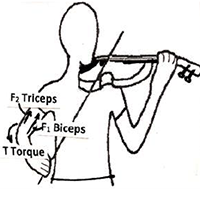Neuro-mechanical aspects of playing-related mobility disorders in orchestra violinists and upper strings players: a review

Accepted: 14 June 2020
HTML: 101
All claims expressed in this article are solely those of the authors and do not necessarily represent those of their affiliated organizations, or those of the publisher, the editors and the reviewers. Any product that may be evaluated in this article or claim that may be made by its manufacturer is not guaranteed or endorsed by the publisher.
Authors
Orchestra musicians are at high risk of neuro-mechanical disorders due to the intense stresses their body withstand, leading to pain and injury. This review presents a comprehensive account of the works on the circumstances and types of playing related mobility disorders of upper strings players, as well as on the relevant neuro-mechanical factors and perspectives to those disorders. The following aspects are considered: asymmetry and imbalance in the musculo-skeletal system, muscle-bone-joint interactions, repetitive overloading and fatigue. An additional factor relates to neuro-muscular redundancy in the motor system, whereby more muscles and tendons than strictly necessary are engaged in performing a motor task, thus making the system indeterminate, with no unique solution. This same task can be performed with different muscle combinations. It is thus of interest to verify whether playing disorders may be alleviated by considering alternative techniques of performance.
How to Cite
PAGEPress has chosen to apply the Creative Commons Attribution NonCommercial 4.0 International License (CC BY-NC 4.0) to all manuscripts to be published.

 https://doi.org/10.4081/ejtm.2020.9095
https://doi.org/10.4081/ejtm.2020.9095



